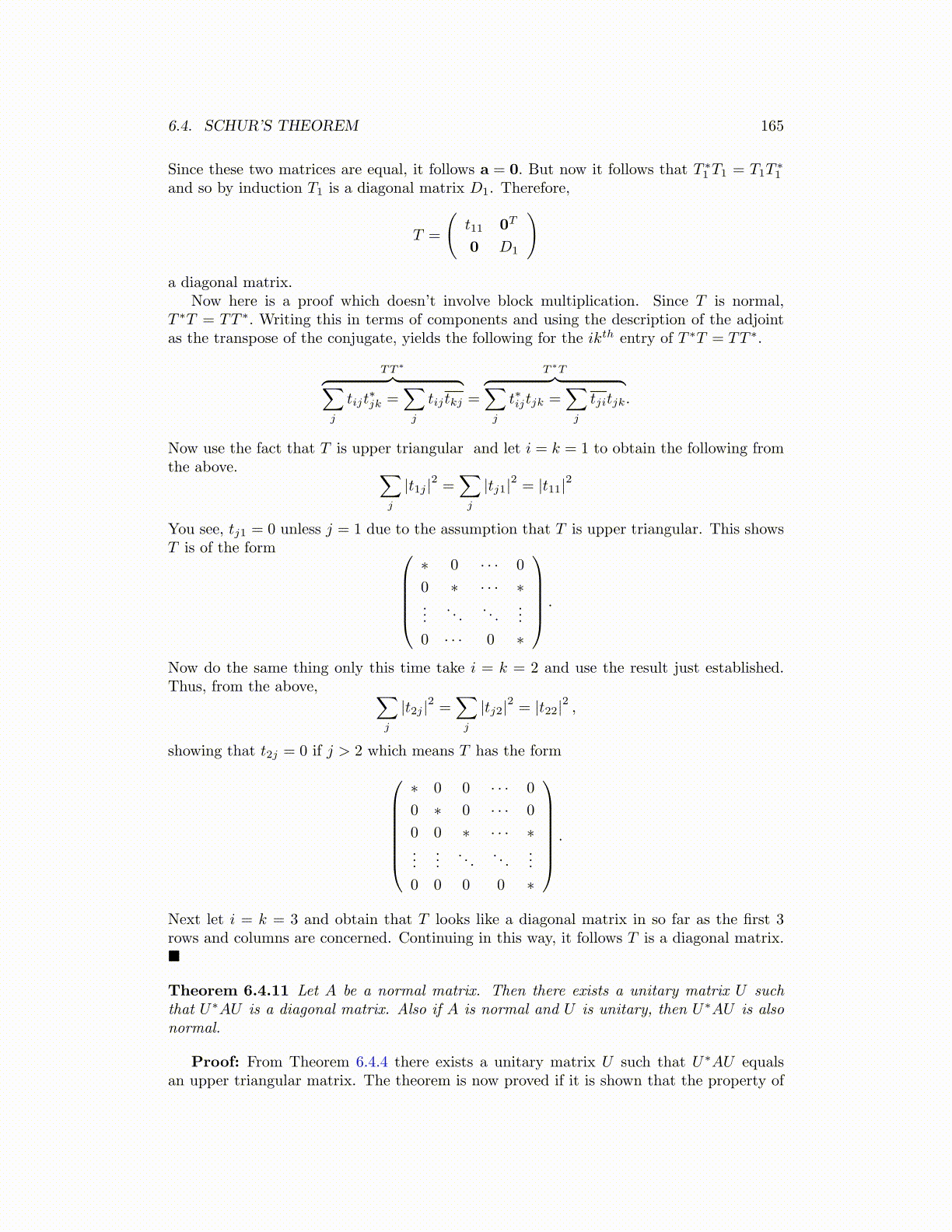
6.4. SCHUR’S THEOREM 165
Since these two matrices are equal, it follows a = 0. But now it follows that T ∗1 T1 = T1T
∗1
and so by induction T1 is a diagonal matrix D1. Therefore,
T =
(t11 0T
0 D1
)
a diagonal matrix.Now here is a proof which doesn’t involve block multiplication. Since T is normal,
T ∗T = TT ∗. Writing this in terms of components and using the description of the adjointas the transpose of the conjugate, yields the following for the ikth entry of T ∗T = TT ∗.
TT∗︷ ︸︸ ︷∑j
tijt∗jk =
∑j
tijtkj =
T∗T︷ ︸︸ ︷∑j
t∗ijtjk =∑j
tjitjk.
Now use the fact that T is upper triangular and let i = k = 1 to obtain the following fromthe above. ∑
j
|t1j |2 =∑j
|tj1|2 = |t11|2
You see, tj1 = 0 unless j = 1 due to the assumption that T is upper triangular. This showsT is of the form
∗ 0 · · · 0
0 ∗ · · · ∗...
. . .. . .
...
0 · · · 0 ∗
.
Now do the same thing only this time take i = k = 2 and use the result just established.Thus, from the above, ∑
j
|t2j |2 =∑j
|tj2|2 = |t22|2 ,
showing that t2j = 0 if j > 2 which means T has the form
∗ 0 0 · · · 0
0 ∗ 0 · · · 0
0 0 ∗ · · · ∗...
.... . .
. . ....
0 0 0 0 ∗
.
Next let i = k = 3 and obtain that T looks like a diagonal matrix in so far as the first 3rows and columns are concerned. Continuing in this way, it follows T is a diagonal matrix.■
Theorem 6.4.11 Let A be a normal matrix. Then there exists a unitary matrix U suchthat U∗AU is a diagonal matrix. Also if A is normal and U is unitary, then U∗AU is alsonormal.
Proof: From Theorem 6.4.4 there exists a unitary matrix U such that U∗AU equalsan upper triangular matrix. The theorem is now proved if it is shown that the property of